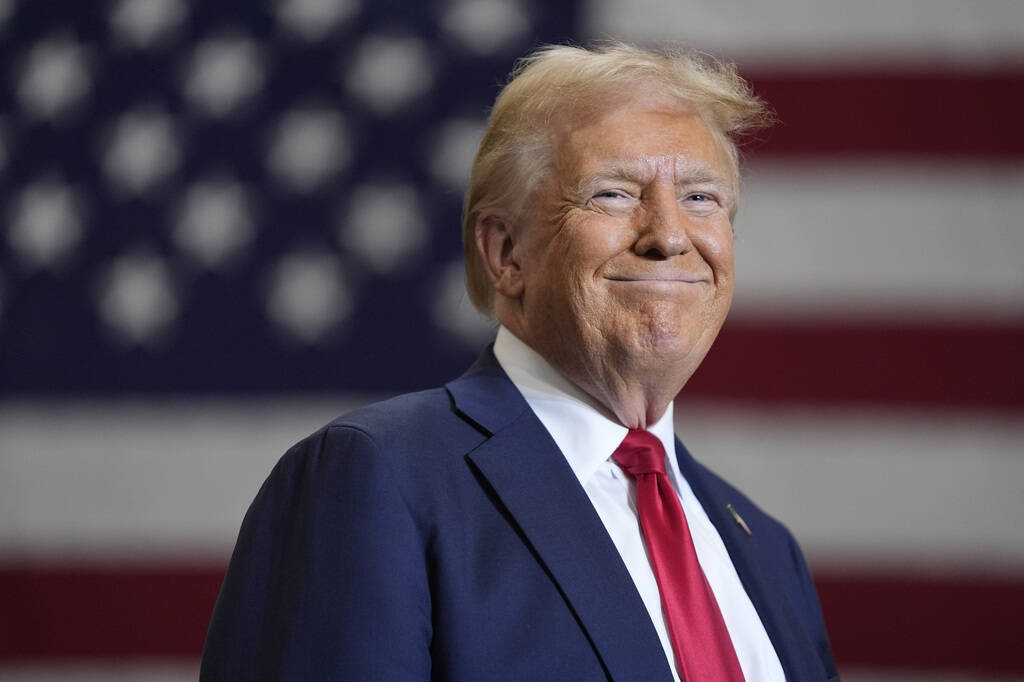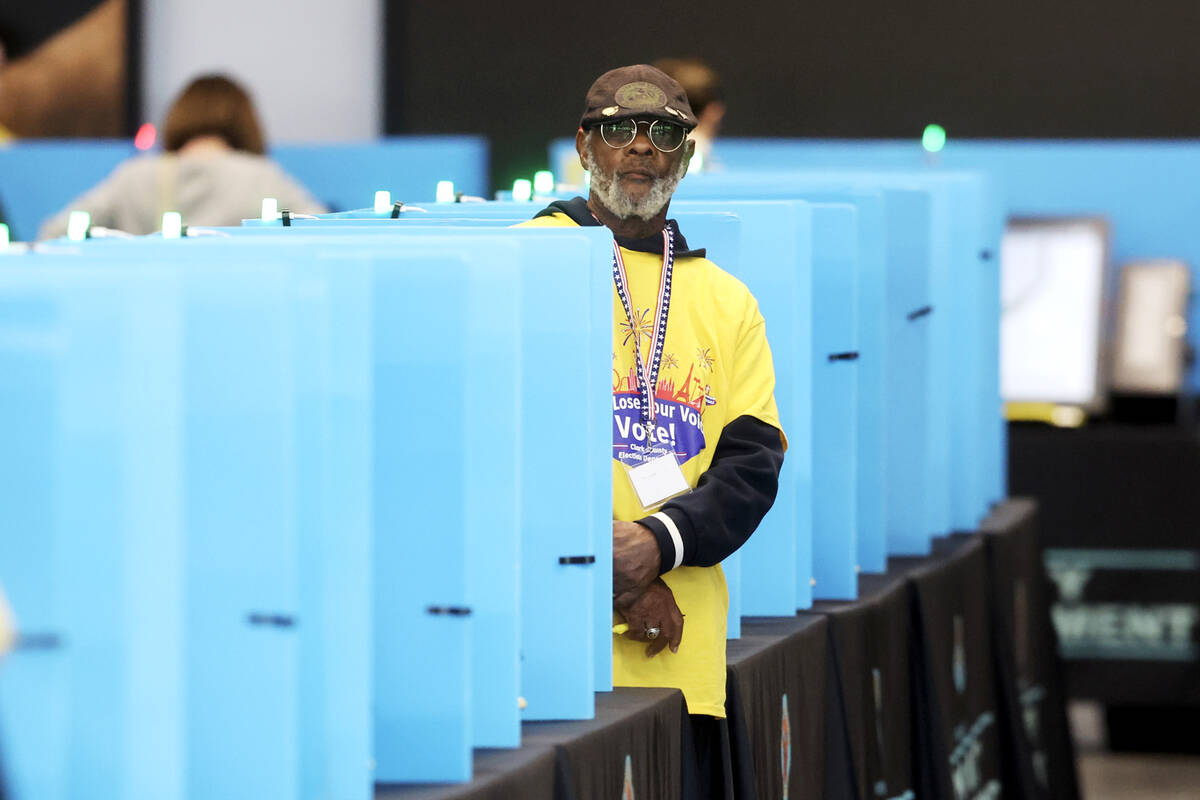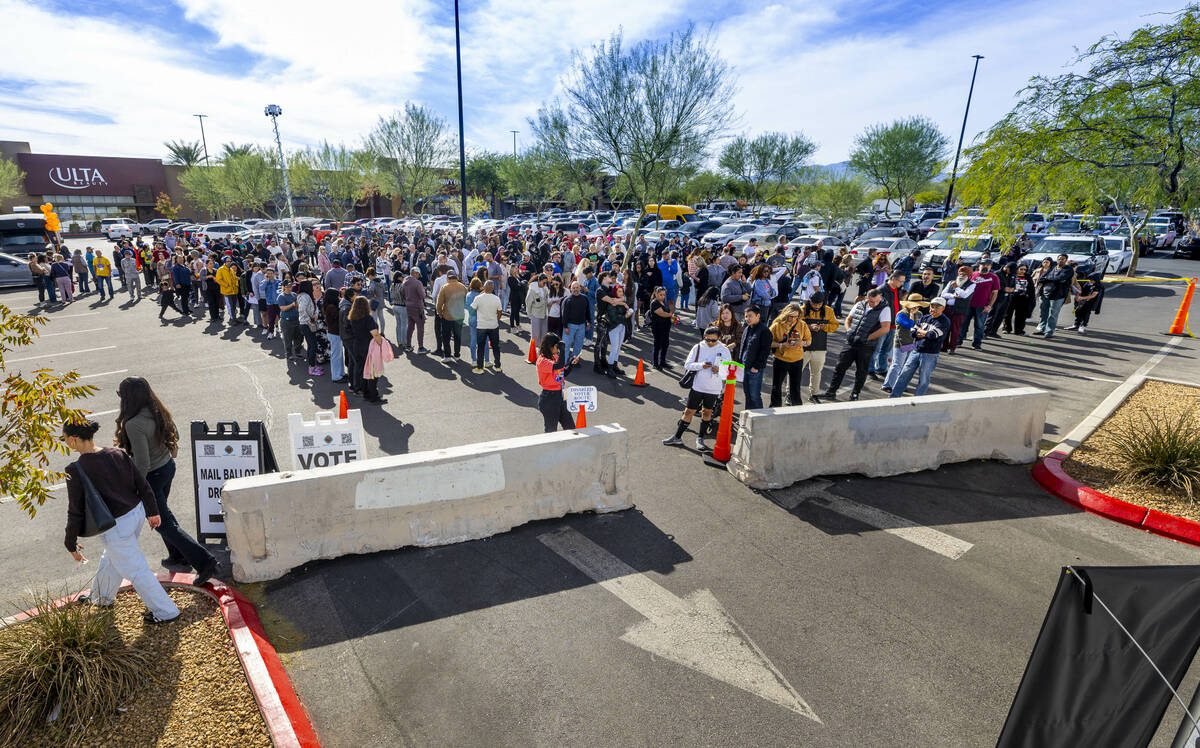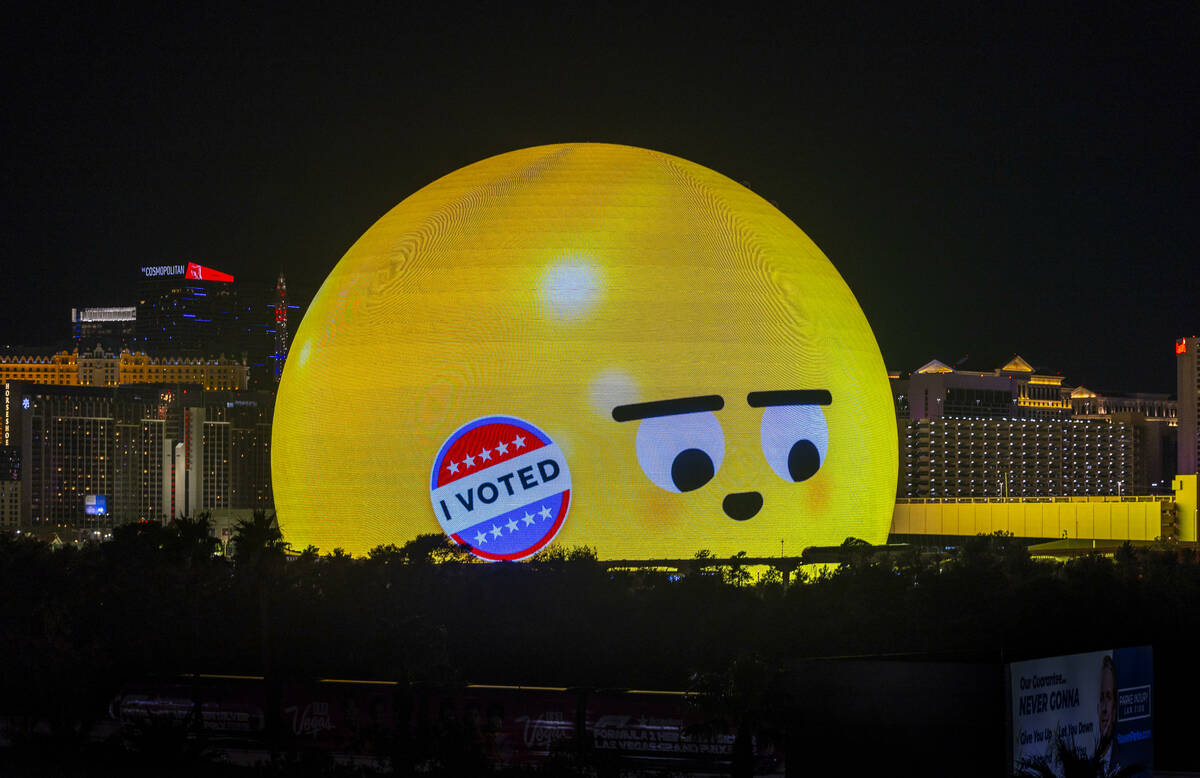5 takeaways from the 2024 election in Nevada
After months of incessant campaign ads and an onslaught of political events, the 2024 election is over.
It saw a sweeping victory for Republican President-elect Donald Trump, and it continued the tradition of close U.S. Senate races in Nevada.
While mail ballots continued to be counted into the weekend and official results will not be finalized until later this month, the winners of most races have been determined.
Longtime incumbents in Nevada’s congressional seats all won re-election. Democratic Sen. Jacky Rosen won her race against Republican challenger Sam Brown. Trump won Nevada, marking the first time a Republican presidential candidate had captured the state in 20 years, and continuing the state’s record of voting for the winning presidential candidate on all but two occasions since 1912.
Here are the five biggest takeaways from the 2024 election, so far:
1. Voter turnout is average.
Nevada’s voter turnout is so far comparable to previous years and to other states across the country. As of Friday afternoon, turnout was 69.8 percent. The 2020 general election saw 77 percent turnout, but it’s difficult to compare the turnout based on total registered voters due to the state’s automatic registration system.
Comparing the actual number of people who voted, the past two general elections are similar. In 2020, 1,407,761 people voted in Nevada. In the 2024 election, 1,415,029 people voted, though that number could increase as the final ballots are counted.
The high turnout of the 2020 election was likely an anomaly because of COVID-19 and the way the election was run, said David Damore, a political scientist at UNLV.
“We end up with roughly the same number of votes that were cast in 2020 despite population increase,” Damore said.
Compared with other states, Nevada’s turnout is about the same. Based on the voting-eligible population, Nevada’s turnout was about 65.2 percent in 2024, according to The Washington Post. Iowa saw a 70 percent turnout, and Virginia had a 67.6 percent turnout.
2. Nonpartisan voters participated at a higher rate.
Nonpartisans and third-party voters made up a larger percentage of the total voter turnout this year than in the midterm election in 2022, which came as a surprise, Damore said.
Non-major-party voters made up 32.6 percent of those who turned out in 2024, while Democrats made up 31.5 percent and Republicans 35.9 percent, according to the latest turnout data from the secretary of state’s office.
The number of nonpartisans and third-party voters who participated is closer to the number of registered voters who don’t identify with either party, which is about 40.5 percent.
That’s a big difference from the 2022 midterms, when non-major-party voters represented less than 26 percent of voter turnout.
“Nonpartisans are growing in numbers — and they are starting to vote,” said Ash Mirchandani, chair and founder of the Coalition of Independent Nevadans.
In future cycles, Mirchandani expects nonpartisan voters will continue to participate, and their influence will continue to grow.
3. Trump and Rosen win Nevada.
Though Trump won the state, downballot Democrats did well.
As of Saturday morning, Trump was leading Harris by more than 46,000 votes, with 724,498 Nevadans voting for him and 678,399 voting for her.
Rosen led Brown by about 20,500 votes, 675,318 to 654,747, as of Saturday morning.
The split-ticket, 2024 results mirror 2022, when Republican Gov. Joe Lombardo won a close vote, while Democrat Sen. Catherine Cortez Masto was narrowly re-elected.
The Trump and Rosen wins came down to a couple different factors: split-ticket voting and the trend of ballot roll-off, where voters participate in the presidential election but not the other races, according to Nevada political experts.
While Nevada voters chose Trump in the presidential race, fewer voted in the Senate election, UNLV political science professor Dan Lee said. That was seen in other states, too, including Michigan and Wisconsin, where Democrats held onto Senate seats as voters picked Trump, he said.
Rosen also had an incumbency advantage, Lee said. Incumbents raise and spend a lot more money and are much more well known, he said. Rosen’s messaging focused on her bipartisan record, Lee said.
The results might also explain who voters blamed for the problems that drove them to Trump. Voters associated the challenges facing the country with the Biden-Harris administration, but not with Nevada’s congressional incumbents, Mirchandani said.
“I think the presidential race took the oxygen out of the room,” he said.
4. Nevadans voted based on the economy.
The outcome of the election was based on the economy, according to Damore, adding that the election served as a “referendum of the incumbent party’s handling of the economy.”
Everybody was concerned about their pocketbooks, Mirchandani said, “and when that happens, people tend to want to change.”
Voting behavior has changed, with the Latino vote and other demographics breaking toward Trump. The short answer behind that is the economy, Lee said.
Latino voters, and voters as a whole, thought about their own economic interests, he said. They felt that because prices have gone up the past four years, change needed to be made, he said. The economy also could have played a role in turnout.
“It’s just hard to turn out the vote when people are not that enthusiastic about how things are going,” Lee said.
During the campaign cycle, because Harris wanted to split from Biden, she never made the case that job growth is up and inflation is down, Damore said.
“I never saw that ad,” he said.
“They sort of misread the terrain about how much the economy matters,” he said, while the Trump campaign was successful with the old Reagan campaign slogan of “How were you doing four years ago?”
5. Parties, organizations up their ground game.
The Nevada Republican Party was successful in increasing turnout, especially compared with 2022. Republicans increased their ground game in Nevada, Damore said. They encouraged voters to vote by any method available, a shift from previous cycles, when they cast doubt on the security of mail ballots and voting early.
Lombardo also helped grow the party’s campaign efforts, Damore said. While the state party focused on the top of the ticket, the governor kept an eye on legislative races that would have rendered his veto power moot if Democrats had won supermajorities in both chambers. They didn’t.
Damore said there is going to be a lot of “soul-searching” on the Democratic side, but Republicans also missed the opportunity to knock out Democratic Rep. Susie Lee. Her opponent, Drew Johnson, did not have as much presence, and Damore never saw a TV ad for him.
There’s also an open question about the strength of the Reid Machine, the Democratic elections powerhouse created by the late Sen. Harry Reid, Damore said.
“Obviously, now we’re a ways away from the glory days of the Reid Machine,” he said. “No one sort of can step up and be that type of leader.”
Reid was a singular figure in terms of his ability to command resources from around the country and bring them to Nevada, Damore said.
Part of that organized campaign effort is the powerful canvassing operation of the Culinary Workers Union Local 226 and Bartenders Union Local 165. Ted Pappageorge, secretary-treasurer of the Culinary, said the union ran the largest operation so far.
As part of its union canvassing program, members knocked on more than 900,000 doors and had more than 200,000 conversations with voters, Pappageorge said.
“While we were disappointed with the presidential results, we had amazing victories,” Pappageorge said.
The union helped re-elect Rosen and the other Democratic congressional incumbents, protected the Assembly and the Senate and supported Shelley Berkley for Las Vegas mayor, he said.
Pappageorge said Democrats were very clear about the economy, promising to take on price gouging, and he thinks overall the working class and the issues that matter to them were heard.
“We think Kamala Harris is a tremendous candidate and has fought for workers and proven herself,” he said. “But at the end of the day, we’ve had massive and major victories here in the state of Nevada, and we’re very proud of our work.”
Contact Jessica Hill at jehill@reviewjournal.com. Follow @jess_hillyeah on X.
WHAT'S NEXT?
Important dates for the election, according to the secretary of state's office:
Nov. 9: Deadline for county election officials to accept mail ballots postmarked on or before Election Day.
Nov. 12: Deadline for voters to cure their ballots.
Nov. 15: Canvass of the general election returns by each county board of commissioners/supervisors.
Nov. 26: Canvass of the general election returns by the Nevada Supreme Court.
Dec. 17: Meeting of the electoral college .


























